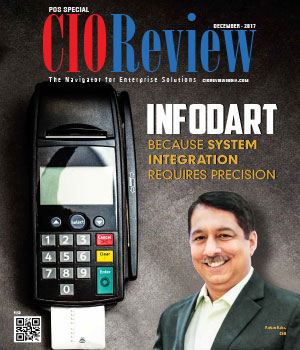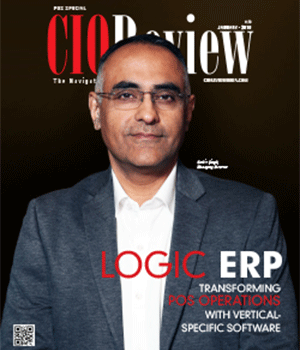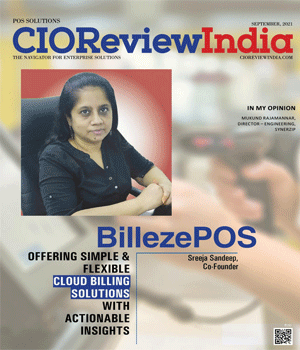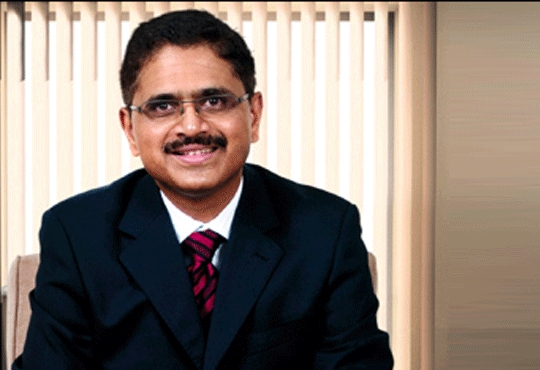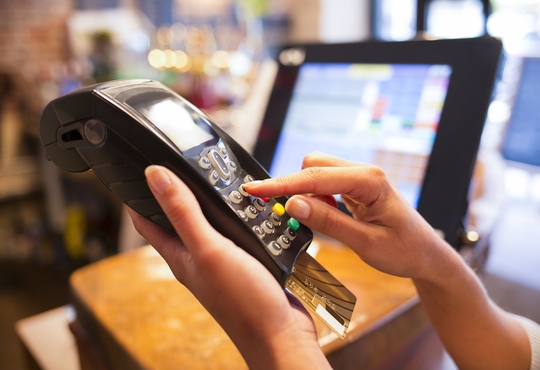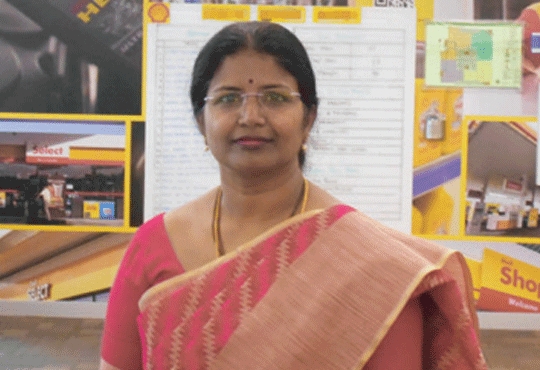
Customer Centric Retailing Requires Right Technology
Ed Khatuka, CEO, Intellect Commerce Ltd. | Monday, 14 January 2019, 12:25 IST
 1. POS technology continues to evolve, and is becoming more affordable, intelligent, and ingrained into core business operations. How do you see the evolution of cloud based POS? What are the major challenges involved in its implementation?
1. POS technology continues to evolve, and is becoming more affordable, intelligent, and ingrained into core business operations. How do you see the evolution of cloud based POS? What are the major challenges involved in its implementation?
Cloud based POS, as you have mentioned, is defiantly an evolving technology that has created good interest in certain verticals and geography as it offers a few tangible advantages:
• OpEx Model: Cloud POS is available as SaaS and priced on a monthly subscription model which could be lucrative for someone who is entering the retail segment or Retail SMEs.
• Simplicity: Cloud POS provides straight out of the box functionality like standard wallet, and marketplace integration to meet few of the requirements that a retailer has. Implementation of cloud POS with standard offering is also simpler while regular maintenance requirements are very low.
With the pros of Cloud POS, one can’t overlook the cons of the same:
• Internet Connectivity: Success of any cloud POS depends primarily upon the internet connectivity - the regular it is, the smoother the operations flow; however, during low/no connectivity, even the basic store billing could be lost causing major business disruption. With WhatsApp penetration, one may think that lost connectivity is a thing of the past – but if you have stores in Tier 3 cities of India, a retailer cannot take net connectivity for granted. One way to address this challenge could be by having the offline POS capability that can automatically sync back the data once connectivity is restored.
• Functionality: When it comes to POS, functionality plays a vital role and requirements differ depending on the vertical, the marketing strategy or the target audience. In growth markets of Africa and South America, retail stores are becoming ‘single stop shops’ where POS is used to sell services like Event or lottery tickets, utility bill payments, and mini-ATM – all of which brings more footfall and additional revenues. Traditional POS works better in such situations as they offer wider customization choices.
Similarly if a retailer’s expansion plans includes multi-verticals the requirements can be diverse. Brands within the same vertical behave differently depending on their product type, target segment, sales strategy and more. To demonstrate this with an example, let’s look at two non-competing fashion and lifestyle brands– H&M and Pantaloons.
While H&M is a niche fashion brand targeting mid-high income groups with selective merchandise, Pantaloons is for masses with volume sales. Such variations from same vertical may demand different functionalities from a POS solution including the ability to handle complex promotions, larger/diverse basket size, integration with private wallet or loyalty programs etc. Hence, when a CTO/CIO is evaluating investing into critical technologies like store management platform, evaluation criteria should keep future growth plans in mind.
Being retail solution veterans for more than 20 years, our recommendation for retailers is to review their 3-5 years growth plan and pick the right technology that suits their business needs. Hybrid technology framework can be an option for the next three years in order to build capability to deal with current vulnerabilities while allowing the cloud-only POS market to mature for upcoming trends.
2. How do you see the adoption of mobile wallets in POS systems? To what extent will it affect the cards payment market?
Demonetization in India has given a big boost to adoption of mobile wallets (PayTM, MobiKwik, PhonePe and more) – to the extent that is has crossed the four critical components (Originally discussed in IPSOS Group report “Mobile POS: Moving the Needle in Mobile Payments”) required for consumer adoption of Mobile Payments applications:
• Habituation: Today we find majority of Indian consumer using this for something habitual, like buying grocery and food items or coffee/tea which is a daily affair for many.
• Ubiquity: From utility bill payment to e-commerce checkout to Uber, the wallets have crossed this threshold too.
• Incentives: Even though this is not going to last long, to gain market share, wallet providers give people plenty of reasons to load a mobile payments application and then use it repeatedly in a retail environment.
• Retailer Support Training: Traditionally this could have been the biggest barrier for any technology adoption. Demonetization has addressed this quite easily too.
Our internal survey of retailers indicates that both in India and Africa, wallet adoption is gaining a larger share of POS payment method in these geographies where the penetration of credit cards has traditionally been lower to start with. Global Data’s survey also reflects that the share of cash payment in total e-commerce transaction value declined from 31% in 2013 to 16% in 2017, and cards dropped from 38% to 32% whereas the mobile wallet share jumped from just 7% to 29% during the same period.
It is evident that the consumers are not only benefiting from convenient payment option but also the wallet provider promotions are helping the adoption. A retailer is also benefiting from this trend. As compared to credit card transaction costs, the wallet payment processing costs are lower too.
Mobile Wallet as a payment option is definitely here to stay. In fact, in certain geographies, we might even find large retailers launching closed (private) wallet in addition to using 3rd party ones.
3. How can the data collected from POS systems be analyzed to increase sales and levels of customer service?
Smart POS is capable of doing more than just the recording of sales transactions. The details about customers that could be collected include customer name, address and contact information and preferred payment method - whether it’s through cash, credit card, debit card wallet, or other payment methods. Our Data science team are creating Retail specific Machine Learning framework to analyze these in combination with data available from other channels, sources like social media, sales history, supply chain, past campaigns, survey data that is linked via SMS/email address etc to create a 360 degree profile of a customer. This extremely rich information can be leveraged to increase customer engagements and sales.
Today there are 9x9 data dimensions that AI tools can analyze in various combinations to create customer engagements that can lead to increase in both top and bottom-line. Going forward, we anticipate adding various IOT based store sensors to further enhance customer experience.
9X9 Data points for AI (Combine, Create, Implement, Delight)
• Channels
• Brands
• Category
• Individual/family
• Payment Mode
• Merchandise
• Tier Level
• Longevity of relationship
• Clock, Calendar and season
4. How is artificial intelligence going to influence POS?
Retail, like most other industries is becoming an information data mine and so AI is going to be a key technology that would be required to analyze all the information collected and to extract actionable insights that translate into more clicks/footfalls and ultimately more revenue.
Some of our initiatives with regard to the application of AI and Machine Learning to enhance retail experience are:
• Stores Assortment – How/what gets stocked in a Kurla store in Mumbai could be far different than that in Andheri store. In such case, AI can help create more precise segmentation based on what the local community is buying and this will be further fine-tuned by more recent buying pattern of time quantum than what has typically been followed in retail. Fall fashion used to be planned at least a year in advance - with AI, the lead time required for collecting, processing and planning can be significantly reduced as well as fine-tuned. Similarly, for Toy shopping during Christmas, it is possible to fine tune SKU level stocking plan to increase the sales in last 2 critical weeks.
• More Effective Marketing: Mountains of data captured via POS, e-commerce, m-commerce as well as other 9 dimensions are being analyzed to ensure more precise, individualized and real-time targeting with the help of AI. We have made it easier to find item velocity faster, find a co-related product and do a combo promotion targeting a sub-segment of consumer to ensure that product is sold within a defined period. This not only increases the revenue but also reduces the stock holding cost as well as promotion costs. According to the Smart Data Collective, the potential outcomes of real-time marketing alone can increase sales opportunities by up to 20 percent over a marketing strategy that leaves AI out.
5. Where do you see this market in the near future?
Retail is one of the fastest growing industries in India and contributes massively to the Indian growth story. By 2020, the industry is expected to reach the $1.1 trillion mark, and right now contributes 10% to the country’s overall GDP.
In today’s retail market in India, we see some interesting developments:
• Growth of Organized Retail: Organized retail market in India has grown at a CAGR 24.26 percent in terms of revenue over the period 2013-2018, contributing to 8-9% of the overall retail sector. Though currently e/m-commerce is taking the larger chunk of this growth percentage, it is anticipated that Brick and Mortar is going to see some good investment and growth too.
• Brick and Mortar will endure: Whether it is Chinese mobile maker – Xiaomi or Amazon, both have been in the news for replicating their online experience to offline. The industry has realized that the future of online is with offline. Retailers will witness organized retail shifting from e-commerce (the trend in 2015) to building of stores/shops, a step towards hybrid model of retailing.
• AI, IOT and other technological adoption: New Age Retail requires cutting edge technologies to increase customer engagement, employee productivity, manage their business better, and ultimately drive revenues and profits higher. Investment in technology is expected to increase competition as the market moves from product centricity to experience centricity.
The retail industry will keep evolving as the customers spending power continues to increase as well as their preference shifts to experience centric shopping.
CIO Viewpoint
How to use technology to drive in-store...
By Kunal Mehta, General Manager - IT - Lifestyle business, Raymond Limited
Incorporating Technology for Successful GST...
By Susheel Navanale, Group CIO, Tata Global Beverages
Point of Sale is Now Point of Sense
By Bala Thiagarajan, Head - IT, Hudsons Bay Company
CXO Insights
Why Merchants are Making Payment Data Security...
By Sunil Khosla, President- Digital Business, India Transact Services Limited
DIGITAL TRANSFORMATION - What Successful...
By Vineet Aggarwal, Head IT, SRL Ltd.
Evolution Of Point Of Sale Systems


